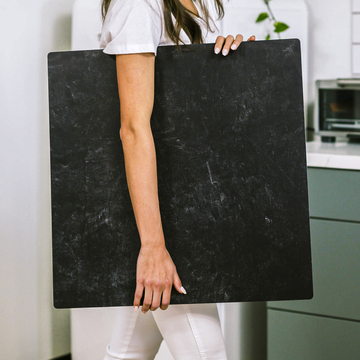As a food photographer with over a decade of experience, I've discovered that the perfect wooden backdrop is more than just a pretty surface - it's a sophisticated tool that can transform an ordinary food photo into an extraordinary one. Let me share the hard-won insights that took years to master.
Why Wood Matters More Than You Think
The magic of wooden backdrops lies in their unique cellular structure. Unlike synthetic surfaces, wood interacts with light in ways that can add depth, warmth, and authenticity to your food photography. It's nature's own light sculptor, working silently behind your subject.
The Light Dance: Understanding Wood's Properties
Wood is anisotropic - a fancy way of saying it reflects light differently along and across its grain. This natural property creates opportunities for creative lighting that synthetic backdrops simply can't match.
Working with Wood Grain
- Position lights across the grain to emphasize texture in rustic compositions
- Align lights parallel to the grain for cleaner, minimal looks
- Try rotating your backdrop 45 degrees to discover new light interactions
Temperature and Steam: The Technical Edge
Here's a pro secret: maintaining your wooden backdrop slightly cooler than your food (about 2-3 degrees) creates optimal conditions for capturing those coveted steam shots. This temperature differential helps steam remain visible longer, giving you more time to nail the perfect shot.
Color Science: The Wood Spectrum
Different wood species affect your food's appearance in subtle but important ways:
- Pine: Adds subtle yellow undertones
- Oak: Provides neutral to warm casting
- Walnut: Creates rich, deep undertones
Practical Challenges and Solutions
-
Moisture Management
- Always seal your wooden backdrops
- Test surface tension before important shoots
- Keep cleaning supplies handy
-
Pattern Prevention
- Shoot at 15-20 degree angles to minimize grain interference
- Use diffused lighting to soften strong grain patterns
Bringing It All Together
Your wooden backdrop isn't just a surface - it's an integral part of your photographic toolkit. Start by positioning it at a slight angle to your camera, consider grain direction in relation to your lighting, and build your composition thoughtfully from there.
Remember: mastering wooden backdrops is about balancing technical knowledge with artistic intuition. Each shoot is an opportunity to deepen your understanding of these versatile surfaces.
Quick Action Steps
- Experiment with different wood species
- Document how various foods interact with each surface
- Create a personal reference guide of your findings


